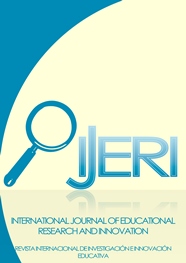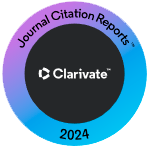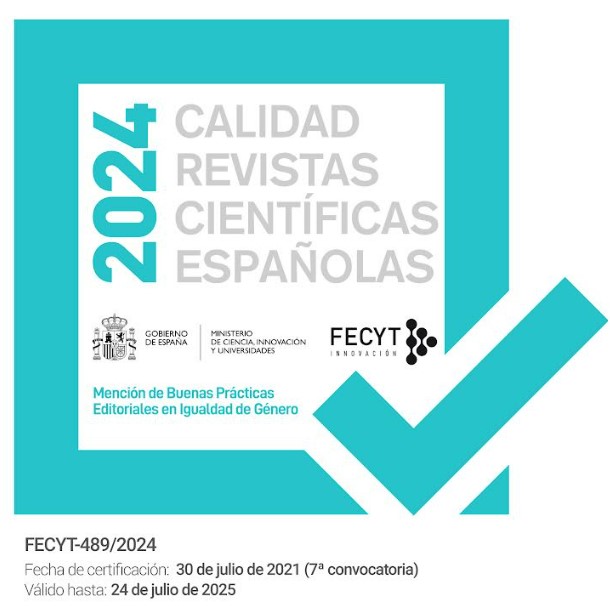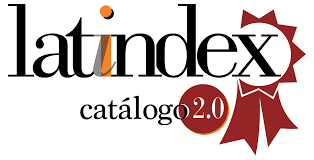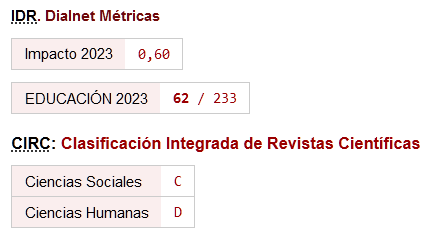Perceptions of university students about virtual reality as a didactic resource: a pre-experimental study with a control and experimental group
DOI:
https://doi.org/10.46661/ijeri.5904Keywords:
Education, educational technology, pedagogical innovation, teaching strategyAbstract
This article presents the results of a study of the impact of incorporating Second Life on the didactics of a university degree subject as well as on student satisfaction, administering a survey to two groups of students enrolled in the same subject through a 24-item questionnaire scored on a 5-point Likert scale for data collection. Subjects comprised 75 students who used the traditional model and 75 students who used a virtual reality model. To verify the hypotheses, the data analysis focused on the descriptive statistics through a comparison of the mean scores for the dependent variables of each of the groups, and with the verification of parametric assumptions, statistical inference was applied to determine the significance of the variances through Student’s t-test. The results show that students perceive specific advantages linked to the design of VR activities in virtual reality. Hence, the potential of virtual reality for improving the teaching process is confirmed. This study leads to the conclusion that students at Universidad Don Bosco greatly value the teaching learning process mediated by virtual reality.
Downloads
References
Alexander, B., Ashford-Rowe, K., Barajas-Murphy, N., Dobbin, G., Knott, J., McCormack, M., Pomerantz, J., Seilhamer, R. and Weber, N. (2019). EDUCAUSE Horizon Report: 2019 Higher Education Edition, EDUCAUSE, Louisville, CO.
Andalia, R., Labrada, R. and Castells, M. (2010). Scopus: la mayor base de datos de literatura científica arbitrada al alcance de los países subdesarrollados. Revista Cubana de Información en Ciencias de la Salud, 21 (3), 270–282.
Andrés, J. (2004). La investigación ex post-facto. Alzina, R.B. (Ed.), Metodología de la investigación educativa, pp.196–230. Madrid: La Muralla.
Antonaci, A., Klemke, R. and Specht, M. (2019). The effects of gamification in online learning environments: A systematic literature review. Informatics, 6 (3), 1–22. DOI: https://doi.org/10.3390/informatics6030032
Bailenson, J., Yee, N., Blascovich, J., Beall, A., Lundblad, N. and Jin, M. (2008). The use of immersive virtual reality in the learning sciences: Digital transformations of teachers, students, and social context. Journal of the Learning Sciences, 17(1), 102–141. DOI: https://doi.org/10.1080/10508400701793141
Blanco, J. (2002). Virtualidad, realidad, comunidad. Un comentario sociológico sobre la semántica de las nuevas tecnologías digitales. Papers. Revista de Sociologia, 68 (0), 81–106. DOI: http://www.doi.org/10.5565/rev/papers/v68n0.1443
Boulos, M., Hetherington, L. and Wheeler, S. (2007). Second Life: an overview of the potential of 3-D virtual worlds in medical and health education. Health Information & Libraries Journal, 24 (4), 233–245. DOI: http://www.doi.org/10.1111/j.1471-1842.2007.00733.x
Bowers, K., Ragas, M. and Neely, J. C. (2009). Assessing the value of virtual worlds for post-secondary instructors: A survey of innovators, early adopters and the early majority in Second Life. Revista International Journal of Humanities and social Sciences, 3 (1), 40–50.
Burgess, M., Slate, J., Rojas-LeBouef, A. and LaPrairie, K. (2010). Teaching and learning in Second Life: Using the Community of Inquiry (CoI) model to support online instruction with graduate students in instructional technology. The Internet and Higher Education, 13 (1), 84–88. DOI: https://doi.org/10.1016/j.iheduc.2009.12.003
Cagiltay, N., Ozcelik, E., Berker, M. and Dalveren, G. (2019). The underlying reasons of the navigation control effect on performance in a virtual reality endoscopic surgery training simulator. International Journal of Human–Computer Interaction, 35 (15), 1396–1403. DOI: https://doi.org/10.1080/10447318.2018.1533151
Calderón, S., Tumino, M. and Bournissen, J. (2020). Realidad virtual: Impacto en el aprendizaje percibido de estudiantes de Ciencias de la Salud. Revista Tecnología, Ciencia y Educación, 0 (16), 65–82.
Cambra, U. and Viniegra, L. (2016). Integración de la realidad virtual inmersiva en los Grados de Comunicación. Revista ICONO14 Revista científica de Comunicación y Tecnologías emergentes, 14 (2),1–21. DOI: https://doi.org/10.7195/ri14.v14i2.953
Campos Soto, M., Navas-Parejo, M., Moreno Guerrero, A., Campos Soto, M., Navas-Parejo, M. and Moreno Guerrero, A. (2020). Realidad virtual y motivación en el contexto educativo: Estudio bibliométrico de los últimos veinte años de Scopus. ALTERIDAD. Revista de Educación, 15 (1), 47–60. DOI: https://doi.org/10.17163/alt.v15n1.2020.04
Cantón, D., Arellano, J., Hernández, M. and Nieva, O. (2017). Uso didáctico de la realidad virtual inmersiva con interacción natural de usuario enfocada a la inspección de aerogeneradores. Apertura: Revista de Innovación Educativa, 9 (2), 8–23.
Checa García, F. (2011). El uso de metaversos en el mundo educativo: Gestionando conocimiento en Second Life. Revista de Docencia Universitaria, 8 (2),147–160. DOI: https://doi.org/10.4995/redu.2010.6200
Churchill, E., Snowdon, D. and Munro, A.J. (2001). Collaborative Virtual Environments: Digital Places and Spaces for Interaction. London: Springer.
Cohen, L., Manion, L. and Rodríguez, M. (1990). Métodos de Investigación Educativa. Madrid: La Muralla.
De Antonio Jiménez, A., Villalobos Abarca, M. and Luna Ramírez, E. (2000). Cuándo y Cómo usar la Realidad Virtual en la Enseñanza. Revista Iberoamericana de Informática Educativa, 16, 1–11.
DeMers, M. (2010). Second Life as a surrogate for experiential learning. International Journal of Virtual and Personal Learning Environments (IJVPLE), 1 (2), 16–30. DOI: http://www.doi.org/10.4018/jvple.2010040102
Díaz, Z., Moreno, L. and Socarrás, E. (2017). The graduate’s satisfaction with the development of the teaching-educational process in master’s degree courses with the broad-access modality. Revista Cubana de Educación Médica Superior, 31 (3), 168–180.
Dyer, E., Swartzlander, B. and Gugliucci, M. (2018). Using virtual reality in medical education to teach empathy. Journal of the Medical Library Association, 106 (4), 498–500. DOI: https://doi.org/10.5195/jmla.2018.518
Fernández Rico, J., Fernández Fernández, S., Álvarez Suárez, A. and Martínez Camblor, P. (2007). Academic success and student satisfaction with university teaching. Revista Electrónica de Investigación y Evaluación Educativa, 13 (2), 203–214.
Fernández-Sagredo, M., Barrios-Penna, C., Torres-Martínez, P., Sáez- Espinoza, R., Fonseca- Molina, J., Fernández-Sagredo, M., Barrios-Penna, C., Torres-Martínez, P., Sáez- Espinoza, R. and Fonseca-Molina, J. (2020). Percepción de la utilidad de los simuladores virtuales hápticos en educación odontológica por estudiantes, profesionales y académicos: Estudio descriptivo observacional. Revista de la Fundación Educación Médica, 23 (2), 89–94.
Flores Cruz, J., Camarena Gallardo, P. and Avalos Villarreal, E. (2014). La realidad virtual, una tecnología innovadora aplicable al proceso de enseñanza de los estudiantes de ingeniería. Apertura, 6 (2), 86–99.
Folgueiras Bertomeu, P., Luna González, E. and Puig Latorre, G. (2013). Aprendizaje y servicio: estudio del grado de satisfacción de estudiantes universitarios. Revista de Educación, (362), 159–185. DOI: https://doi.org/10.4438/1988-592X-RE-2011-362-157
Franco, A. and González, J. (2011). Realidad virtual: Un medio de comunicación de contenidos. Aplicación como herramienta educativa y factores de diseño e implantación en museos y espacios públicos. Revista ICONO14 Revista científica de Comunicación y Tecnologías emergentes, 9 (2), 185–211. DOI: https://doi.org/10.7195/ri14.v9i2.28
Gamboa, M. and Gómez, I. (2009). Aplicación de los nuevos medios en la educación superior: Del Aula Multimedia al Laboratorio de Aprendizaje. Reencuentro. Análisis de Problemas Universitarios, 55, 34–43.
García, T. and Martínez, J. (2015). Redes sociales y dispositivos móviles en la comunicación de los estudiantes de educación secundaria. Revista de Currículum y Formación de Profesorado, 19 (3), 306–324.
Hernández-gonzález, V., Sans-Rosell., Jové-Deltell, M. & Reverter-Masia, J. (2016). Comparación entre Web of Science y Scopus, studio Bibliométrico de las Revistas de Anatomía y Morfología. International Journal of Morphology, 34 (4), 1369–1377. http://www.doi.org/10.4067/S0717-95022016000400032
Ho, L., Sun, H. and Tsai, T. (2019). Research on 3D painting in virtual reality to improve students’ motivation of 3d animation learning. Sustainability, 11 (6), 1-17. DOI: https://doi.org/10.3390/su11061605
Jamil, Z., Saeed, A., Madhani, S., Baig, S., Cheema, Z. and Fatima, S. (2019). Three-dimensional visualization software assists learning in students with diverse spatial intelligence in medical education. Anatomical Sciences Education, 12 (5), 550–560. DOI: https://doi.org/10.1002/ase.1828
Juca Maldonado, F., Lalangui Ramírez, J. and Bastidas Andrade, M. (2020). Rutas inmersivas de Realidad Virtual como alternativa tecnológica en el proceso educativo. Revista Metropolitana de Ciencias Aplicadas, 3 (1) 48–56.
Kawulich, B. and D’Alba, A. (2019). Teaching qualitative research methods with Second Life, a 3-dimensional online virtual environment. Virtual Reality, 23 (4), 375–384. DOI: https://doi.org/10.1007/s10055-018-0353-4
Kidd, L., Knisley, S. and Morgan, K. (2012). Effectiveness of a Second Life(®) simulation as a teaching strategy for undergraduate mental health nursing students. Journal of Psychosocial Nursing and Mental Health Services, 50 (7), 28–37. DOI: http://www.doi.org/10.3928/02793695-20120605-04
Kim, M. and Hall, C. (2019). A hedonic motivation model in virtual reality tourism: Comparing visitors and non-visitors. International Journal of Information Management, 46, 236–249. DOI: https://doi.org/10.1016/j.ijinfomgt.2018.11.016
León, O. and Montero, I. (2003). Métodos de investigación en psicología y educación. San Francisco: McGraw-Hill.
Lin, C., Chen, S. and Lin, R. (2020). Efficacy of virtual reality in painting art exhibitions appreciation. Applied Sciences, 10 (9), 1-15. DOI: https://doi.org/10.3390/app10093012
Lorenzo Álvarez, R., Pavía Molina, J. and Sendra Portero, F. (2018). Posibilidades del entorno virtual tridimensional Second Life® para la formación en radiología. Radiología, 60 (4), 273–279. DOI: http://www.doi.org/10.1016/j.rx.2018.02.006
Lorenzo-Alvarez, R., Rudolphi-Solero, T., Ruiz-Gomez, M. and Sendra-Portero, F. (2019). Medical student education for abdominal radiographs in a 3D virtual classroom versus traditional classroom: A randomized controlled trial. American Journal of Roentgenology, 213 (3), 644-650. DOI: https://doi.org/10.2214/AJR.19.21131
Lozano-Abad, Y., Rosales-Doria, A. and Giraldo-Cardozo, J.(2019). Competencias del siglo XXI: ¿cómo desarrollarlas mediante el uso de videojuegos en un contexto multigrado. Revista Panorama, 12 (23), 6–17. DOI: https://doi.org/10.15765/pnrm.v12i23.1191
Makransky, G. and Lilleholt, L. (2018). A structural equation modeling investigation of the emotional value of immersive virtual reality in education. Educational Technology Research and Development, 66 (5), 1141–1164. DOI: https://doi.org/10.1007/s11423-018-9581-2
Manzey, D., Luz, M., Mueller, S., Dietz, A., Meixensberger, J. and Strauss, G. (2011). Automation in surgery: The impact of navigated-control assistance on performance, workload, situation awareness, and acquisition of surgical skills. Human Factors, 53(6), 584–599. DOI: https://doi.org/10.1177/0018720811426141
Márquez, I. (2014). Ética de la investigación etnográfica en los cibermundos. Anthropologica, 32 (33), 111–135.
Melús-Palazón, E., Bartolomé-Moreno, C., García García, I., Guillen, S., Esteban, A., Clemente, S., Marco, Á., Gargallo, Pilar. & López, Carlos. (2012). Experience with using second life for medical education in a family and community medicine education unit. BMC Med Educ 12,(30). DOI: https://doi.org/10.1186/1472-6920-12-30
Miguélez-Juan, B., Gómez, P. and Mañas-Viniegra, L. (2019). La Realidad Virtual Inmersiva como herramienta educativa para la transformación social: Un estudio exploratorio sobre la percepción de los estudiantes en Educación Secundaria Postobligatoria. Aula Abierta, 48 (2), 157–166. DOI: https://doi.org/10.17811/rifie.48.2.2019.157-166
Moreta, C. & Said-Hung, E. (2020). La producción científica en el estudio de experiencia de usuario en educación: caso Web of Science y Scopus. Transinformação, 32, 1-12. DOI: https://doi.org/10.1590/2318-0889202032e190003
Nijman, S., Veling, W., Greaves-Lord, K., Vermeer, R., Vos, M., Zandee, C., Zandstra, D., Geraets, C. and Pijnenborg, G. (2019). Dynamic Interactive Social Cognition Training in Virtual Reality (DiSCoVR) for social cognition and social functioning in people with a psychotic disorder: Study protocol for a multicenter randomized controlled trial. BMC Psychiatry, 19 (1), 1-12. DOI: https://doi.org/10.1186/s12888-019-2250-0
Ortega, M. and Romans-Roca, S. (2010). Exploring the potential of Second Life to prepare language students for their year abroad. International Journal of Technology, Knowledge & Society, 6 (6), 57–66. DOI: https://doi.org/10.18848/1832-3669/cgp/v06i06/56162
Panerai, S., Catania, V., Rundo, F. and Ferri, R. (2018). Remote home-based virtual training of functional living skills for adolescents and young adults with intellectual disability: Feasibility and preliminary results. Frontiers in Psychology, 9, 1–6. DOI: https://doi.org/10.3389/fpsyg.2018.01730
Quinche, J. and González, F. (2011). Entornos virtuales 3D, alternativa pedagógica para el fomento del aprendizaje colaborativo y gestión del conocimiento en uniminuto. Formación universitaria, 4 (2), 45–54. DOI: http://www.doi.org/10.4067/S0718–50062011000200006
Reverter-Masia, J., Hernández-González, V., Jové-Deltell, C. and Legaz-Arreseet, A. (2016). Producción en Web of Science y Scopus de profesores funcionarios con sexenio de las ciencias del deporte en España. Revista Interamericana de Bibliotecología, 39 (2), 149–162. DOI: https://doi.org/10.17533/udea.rib.v39n2a06
Ribeiro, A., Gody, G., Neto, L. and Souza, M. (2018). Holografía y realidad virtual en la enseñanza de nanotecnología: nuevos horizontes dirigido a educación secundaria. Revista de Física, (56), 34–45.
Richardson, A., Hazzard, M., Challman, S., Morgenstein, A. and Brueckner, J. (2011). A “Second Life” for gross anatomy: Applications for multiuser virtual environments in teaching the anatomical sciences. Anatomical Sciences Education, 4 (1), 39–43. DOI: http://www.doi.org/10.1002/ase.195
Robinson, K. (2015). Creative Schools: The Grassroots Revolution That’s Transforming Education. New York: Penguin.
Robles Ávila, S. and Díaz Bravo, R. (2017). Prácticas virtuales en Second Life: telecolaboración entre profesores nativos en formación y estudiantes de ELE. Revista Internacional de Lenguas Extranjeras, 6, 55–78. DOI: https://doi.org/10.17345/rile201755-78
Rockstroh, C., Blum, J. and Göritz, A. (2019). Virtual reality in the application of heart rate variability biofeedback. International Journal of Human-Computer Studies, 130, 209–220. https://doi.org/10.1016/j.ijhcs.2019.06.011
Rubio Tamayo, J. and Gértrudix Barrio, M. (2016). Realidad Virtual (HMD) e Interacción desde la Perspectiva de la Construcción Narrativa y la Comunicación: Propuesta Taxonómica. Revista ICONO14 Revista científica de Comunicación y Tecnologías emergentes, 14 (2), 1–24. DOI: https://doi.org/10.7195/ri14.v14i2.965
Sánchez-Rivas, E., Ruiz-Palmero, J. and Sánchez-Rodríguez, J. (2019). Gamification of assessments in the natural sciences subject in primary education. Educational Sciences: Theory & Practice, 19 (1), 95–111. DOI: https://doi.org/10.12738/estp.2019.1.0296
Sánchez-Rivas, E., Sánchez-Rodríguez, J. and Ruiz-Palmero, J. (2019). Percepción del alumnado universitario respecto al modelo pedagógico de clase invertida. Magis, Revista Internacional de Investigación en Educación, 11(23),151–168. DOI: https://doi.org/10.11144/Javeriana.m11-23.paur
Sattar, M., Palaniappan, S., Lokman, A., Hassan, A., Shah, N. and Riaz, Z. (2019). Effects of Virtual Reality training on medical students’ learning motivation and competency. Pakistan Journal of Medical Sciences, 35 (3), 852–858. DOI: https://doi.org/10.12669/pjms.35.3.44
Schwaab, J., Kman, N., Nagel, R., Baher, D., Martín, D., Khandelwal, S., Vozenilek, J., Danforth, D. Nelson, R. (2011). Using Second Life virtual simulation environment for mock oral emergency medicine examination”, Academic Emergency Medicine, 18 (5), 559–562. DOI: https://doi.org/10.1111/j.1553-2712.2011.01064.x
Sevillano García, M., González Flores, M.,Vázquez Cano, E. and Rey Yedra, L. (2016). Ubicuidad y movilidad de herramientas virtuales abren nuevas expectativas formativas para el estudiantado universitario. Revista Ensayos Pedagógicos, 11 (2), 99–131.
Stewart, S., Pope, D. and Duncan, D. (2009). Using Second Life to enhance ACCEL an online accelerated nursing BSN program. Studies in Health Technology and Informatics, 146, 636–640. DOI:10.3233/978-1-60750-024-7-636
Tejedor, J. and Etxeberria, J. (2005). Análisis descriptivo de datos en educación. Madrid: La Muralla.
Topalli, D., Eyüboğlu, B. and Cagiltay, N.(2019). Understanding the effect of handedness on both-handed task performance: An experimental study based on a haptic-controlled, simulation-based surgical skill training scenario. International Journal of Human–Computer Interaction, 35 (6), 478–482. DOI: https://doi.org/10.1080/10447318.2018.1464283
Torres, C. and Rodríguez, J. (2019). Entornos de aprendizaje inmersivo y la enseñanza a ciber-generaciones. Educação e Pesquisa, 45, 1–20. DOI: https://doi.org/10.1590/s1678-4634201945187369
Torres Chávez, T. and García Martínez, A. (2019). Reflexiones sobre los materiales didácticos virtuales adaptativos. Revista Cubana de Educación Superior, 38 (3), 1–22.
Warburton, S. (2009). Second Life in higher education: Assessing the potential for and the barriers to deploying virtual worlds in learning and teaching. British Journal of Educational Technology, 40, 414–426. DOI: https://doi.org/10.1111/j.1467-8535.2009.00952.x
Wiecha, J., Heyden, R., Sternthal, E. and Merialdi, M. (2010). Learning in a virtual world: Experience with using Second Life for medical education’, Journal of Medical Internet Research, 12 (1), 1–17. DOI: http://www.doi.org/10.2196/jmir.1337
Yang, X., Lin, L., Cheng, P., Yang, X. and Ren, Y. (2019). Which EEG feedback works better for creativity performance in immersive virtual reality: The reminder or encouraging feedback? Computers in Human Behavior, 99, 34–351. DOI: https://doi.org/10.1016/j.chb.2019.06.002
Downloads
Published
How to Cite
Issue
Section
License
Copyright (c) 2022 Eduardo, Enrique, Julio, Francisco

This work is licensed under a Creative Commons Attribution-NonCommercial-NoDerivatives 4.0 International License.

